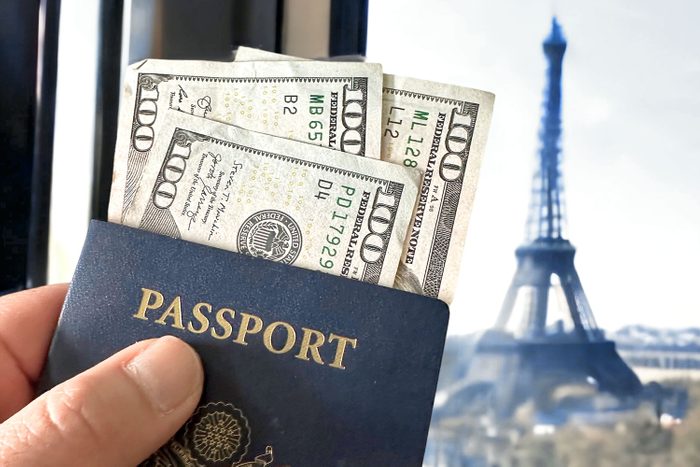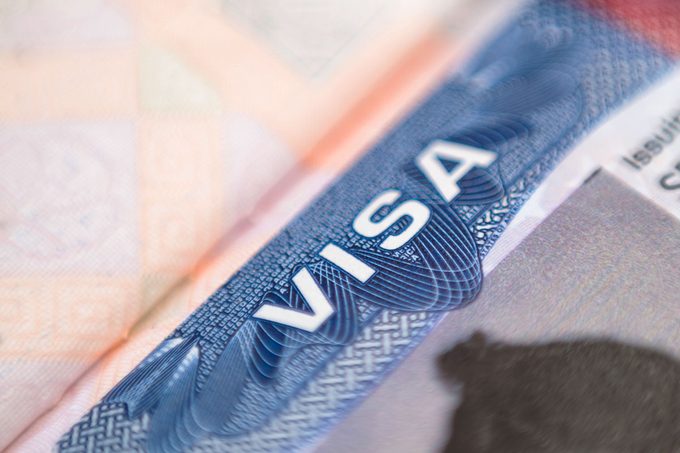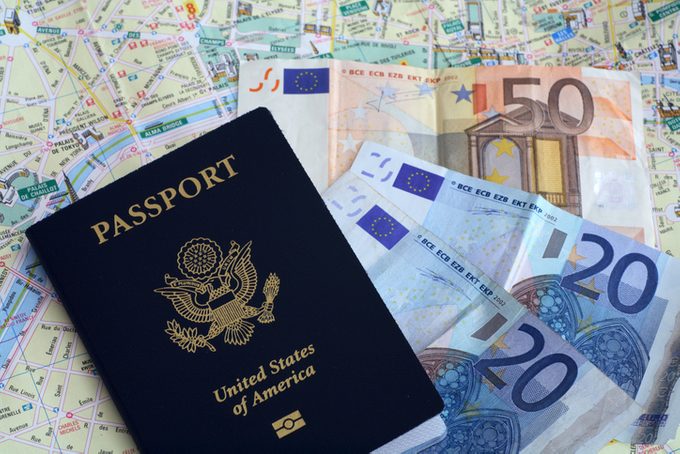U.S. Citizens Will Need to Register and Pay a Fee to Enter Europe in 2024—Here’s What to Know
Updated: Apr. 08, 2024

Next year, you'll need to take an extra step before you jet off on that European vacation. Here's the lowdown on ETIAS and what it means for American travelers.
Each year, American tourists flock to Europe to glimpse the Eiffel Tower, Big Ben, the Sistine Chapel and thousands of other must-see attractions. With so many landmarks to explore in Western Europe and beyond, it’s no surprise the continent is a top destination for U.S. citizens. According to the consumer research company Statista, more than 10 million Americans made the trek to France, Italy, Spain and Germany in 2019 alone. But if you want to travel there after January 2024, you’ll have to register and pay a fee. It’s all thanks to the newly launched European Travel Information and Authorization System (ETIAS).
The European Union’s new system will add an extra step to your travel requirements for 30 European countries. But though it sounds complicated, the process won’t be difficult. And we’ve got everything you need to know before you book your next European vacay.
Get Reader’s Digest’s Read Up newsletter for more travel, humor, cleaning, tech and fun facts all week long.
What is ETIAS?
There’s no such thing as an ETIAS visa, and the system isn’t a digital nomad visa either. So what is it, then? According to the official website, ETIAS is the “new travel permit for Americans and other visa-exempt non-EU citizens visiting European destinations.” It’s an electronic travel authorization for visa-free countries, and it has a faster application and processing time than a visa.
In other words, U.S. citizens won’t need a visa to continue traveling to Europe—but they must apply for ETIAS.
If you meet the ETIAS requirements, you won’t need a visa if you’re traveling for up to 90 days in any 180-day period for business, short-term study or tourism. If you currently hold a passport or will soon apply for a passport from one of 59 travel-visa-free countries and are between the ages of 18 and 70, you will need the new travel authorization for European travel within the Schengen area (a travel zone made up of 27 European countries).
Why are these European requirements changing?

The European Union is changing its requirements to include ETIAS to benefit both travelers and the European Union. When traveling overseas to Europe using ETIAS, you’ll benefit from a more streamlined border crossing—the new travel authorization will get you through faster.
But the launch of the electronic authorization system aims to keep the European Union safer too. Better border management means officials can keep an eye on security issues at the borders. And because ETIAS links to security databases, it’ll be easier to fight terrorism and criminal activity.
When will ETIAS go into effect?
The current launch date for ETIAS in Europe is sometime in January 2024. But that comes after some delays. The European Union initially intended ETIAS to go into effect in January 2021 but later postponed the kickoff to 2023. The quiet pushback of the launch date, following a series of hiccups, has led up to its slated release in 2024, but some sources note that it may take a while for it to go into effect.
Per the ETIAS website, “after the initial launch, there may be a short period of three to six months where ETIAS may not be mandatory for travel. This is to allow the EU to work through any system issues, which may negatively impact travelers due to complications with the initial rollout.” Additionally, the site notes that this is “barring any delay in implementation,” so it’s unclear whether the 2024 launch date is set in stone.
Still, if you’re planning a romantic European vacation and want to skip the new system, you’ll have to travel soon.
What countries will require authorization?

Gearing up for some European country-hopping? These 23 European countries in the Schengen area will require ETIAS authorization from American travelers:
- Austria
- Belgium
- Croatia
- Czech Republic
- Denmark
- Estonia
- Finland
- France
- Germany
- Greece
- Hungary
- Italy
- Latvia
- Lithuania
- Luxembourg
- Malta
- Netherlands
- Poland
- Portugal
- Slovakia
- Slovenia
- Spain
- Sweden
You will also need ETIAS for four non-EU member states:
- Iceland
- Liechtenstein
- Norway
- Switzerland
Additionally, these non-Schengen EU states will require ETIAS:

- Bulgaria
- Cyprus
- Romania
Finally, these microstates will also require the new travel authorization:
- Monaco
- San Marino
- Vatican City
What’s the difference between ETIAS and EES?
The European Union is launching not only ETIAS but also a border-management strategy called the Entry/Exist System (EES). The first thing to know: ETIAS and EES are not the same thing.
For starters, ETIAS is a new entry requirement, while EES is a registration. When traveling visa free, you’ll need to apply for ETIAS travel authorization, but you won’t need to take any action before your trip for EES registration. Instead, this is done automatically at the external border of any of the 29 European countries using EES, and this registration will take place each time you cross an external border between countries. EES will also replace manual passport stamps.
How much does ETIAS cost?

Luckily, if you’re traveling on a budget, the application fee for ETIAS won’t break the bank—it’s less than $10. Travelers will pay $8 for ETIAS (or €7).
How do you apply for ETIAS?
Applying for ETIAS online is a relatively simple process. You’ll fill out the electronic form with personal information, such as your first and last name, nationality, place of birth, address, phone number and email. You’ll also need to include your passport information, your travel plans and your history of travel, and you’ll have to answer security-based questions. From there, you’ll pay the fee and submit your application.
It’s important to avoid scam websites pretending to be ETIAS. Make sure you apply on the official site using this application.
Overall, the application process should take about 10 minutes, while approval for your travel authorization will take 96 hours or fewer. You’ll know your application has been approved when you receive an official confirmation email.
How long does an ETIAS authorization last?

Once you’ve received your ETIAS authorization, it will remain valid for three years from the issue date. You may use it to travel multiple times as long as your travel documents have not expired.
How often do you need to renew/reapply?
You will need to reapply for ETIAS when your previous travel permit has expired, which will happen three years after your application date. If your passport expires sooner, you will need to get a new passport and reapply for ETIAS.
Sources:
- Statista: “The Most Popular Destinations for U.S. Travelers Abroad”
- European Travel Information and Authorisation System: “Europe’s Travel Authorization for U.S. Citizens”
- European Travel Information and Authorisation System: “ETIAS start date set for 2024”
- European Travel Information and Authorisation System: “ETIAS Requirements”
- European Travel Information and Authorisation System: “What are the ETIAS benefits to the European Union?”
- ETIAS: “ETIAS Requirements”
- ETIAS: “Frequently Asked Questions”
- European Union: “Key differences between ETIAS and the EES”



